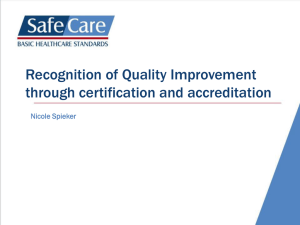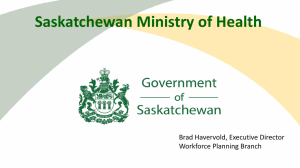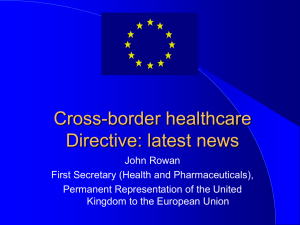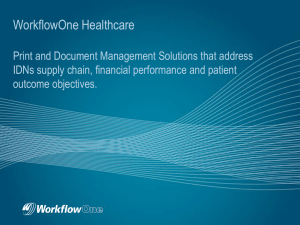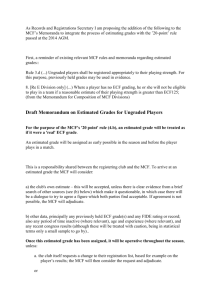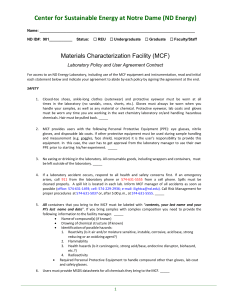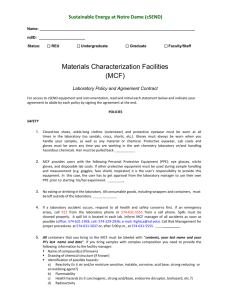PharmAccess
advertisement
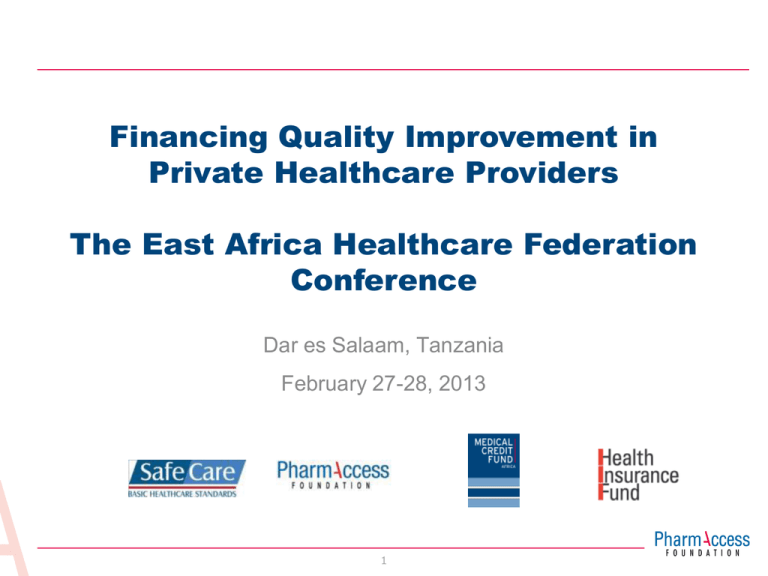
Financing Quality Improvement in Private Healthcare Providers The East Africa Healthcare Federation Conference Dar es Salaam, Tanzania February 27-28, 2013 1 What is PharmAccess? Mission “Improve access to quality basic health care including HIV/AIDS treatment and care in sub-Saharan Africa, through building sustainable health systems” Office and staff • • • • Working in 10 African core countries PharmAccess is employing a multi-disciplinary team of 100+ experts, including medical specialists, laboratory technologists, public health specialists, (health) economists, anthropologists and entrepreneurs Head Office in Amsterdam, The Netherlands Branches offices in Namibia (Windhoek), Nigeria (Lagos), Tanzania (Dar es Salaam, Moshi), Kenya (Nairobi) and Ghana (Accra) 2 PharmAccess: a Group of Organizations Sharing a Common Goal • Healthcare Quality Basic upgrading Capacity building Monitoring & evaluation • Health Insurance Program development Capacity building Technical Assistance •Health Provider Financing Loan provision Technical assistance • PPPs Workplace Programs Consulting (PPP) • Operational Research Data collection Impact analysis Learning 3 Health Care in Africa Stuck in a Vicious Circle • African healthcare systems stuck in a vicious circle of low demand and supply Shortage of resources is the major impediment to quality of healthcare services Access to quality basic health care among the poor is low • • Demand Financing Low Supply ↓ Solidarity ↓ Quality and capacity ↑ Out-of-pocket expenses ↓ Efficiency ↓ Access to health care ↓ Availability data ↓ Ownership ↑ Risk for owners Delivery Low Patient ↑ Catastrophic spending ↓ Utilization 4 and investors Breaking the Vicious Circle: Building Trust Health Insurance Fund -Premium subsidies -Education and marketing - Introducing health insurance - Upgrading and capacity building - Quality assurance - Certification and accreditation Donors / governments (tax) Demand ↑ Solidarity ↓ Out-of-pocket expenses ↑ ↑ Government (public) Financing Higher Supply SafeCare ↑ ↑ ↑ ↓ ↑ Access to health care Ownership Prepayment (contribution) by users Delivery Quality Efficiency Availability of data Risk Investment opportunities Higher Patient ↑ Increased willingness to pre-pay ↓ Decreased financial risk 5 Medical Credit Fund “Financing Health Care Quality Improvement in Africa” 6 Investment Strategy: MCF works with local partners MCF Access to Finance Program Quality (SafeCare) & Business TA Program Partnership local banks Partnership local TA partners Sub Sahara Private Healthcare providers Access to Finance Program: Business planning improvement, making healthcare providers bankable Business planning training Preparation of financial statements and business plan (local partner) Support with filing of loan application Track record building through local banks Entry loan Around EUR 2,500 Second Loan Around EUR 20,000 Third loan Over time, the local commercial bank relative exposure on the client increases 8 Around EUR 50,000 MCF – Results (December 2012) Portfolio Performance • 232 loans disbursed since inception: USD 1,600,000 • Outstanding Loans USD 900,000 • PAR > 90 days: 1.7% TA Performance Partners 274 173 146 197 • • • • Clinics formally entered the MCF Program Clinics completed business training Clinics completed quality training SafeCare assessments performed Tanzania: APHFTA, BancABC and NMB Bank Ghana: SPMDP/GRMA and MBG Bank Kenya: KMET and PSI Kenya, KREP Bank Nigeria: Hygeia Foundation and FCMB Bank SafeCare: International Standards and Stepwise Certification for Healthcare Facilities in Resource Restricted Settings International Standards, Local Solutions “Quality is not necessarily high-tech or high cost” SafeCare allows for realistic, practical and achievable solutions in resource restricted settings SafeCare - Quality Standards SafeCare started in 2011, as a collaboration of: Comprises of innovative and realistic standards for healthcare providers in resource-restricted settings, ISQua approved Linked to a step-wise improvement process recognized by certification that can be used by governments, donors, health insurers, (social) investors and loan providers for benchmarking and performance-based financing These certificates of recognition will eventually improve the reputation of these healthcare facilities Clients are expected to have increased trust in services provided SafeCare - Activities & Results With PAI and partners: 35 local surveyors and facilitators trained With MOHSW Tanzania: MoU for TA to certify facilities With MCF: 59 APHFTA facilities surveyed, 4 certified in Tanzania With MCF: 112 facilities surveyed, 18 certified elsewhere With APHIA Kenya: 360 facilities to be surveyed (PSI, KMET, FHI) With NHIFL: TA to NHIF Kenya to develop certification of facilities for the new outpatient scheme With MOH Kenya: mapping of patient safety using SafeCare as basis for a new licensing structure for healthcare facilities With AHME:using safe care for network in Kenya, Nigeria and Ghana With Shell Oil: certify healthcare facilities in Nigeria 14 The Partnership of MCF, SafeCare and APHFTA: Recognizing Achievements Synergy of Programs: a Multiplyer Effect Increased trust and utilization of care Transparancy of quality of care Insurance creates demand for quality care Access to finance to allow for investments Discussion: Topics 1. Access to Capital: • What are the barriers for banks to lend to providers? • What are the barriers for provides to access bank loans? 2. Role of Insurance: •What is the role of insurance in accessing finance? •What is the role of insurance in quality improvement? 3. Rural Outreach: •How to stimulate private provider investments in remote areas? •Or should these be entirely left to the public sector? 4. Regulation: •What about the channel for self-regulation of private providers? •Should self-regulation through certification be self-financing? •What is the role of the public sector in private sector regulation? • 5. Regional Cooperation • • • • Can providers networks/associations an active role in regulation? Can they design incentive systems for regulation? Can they play a role in enforcement of self-regulation? Is there perspective for a common regional self-regulation format?

